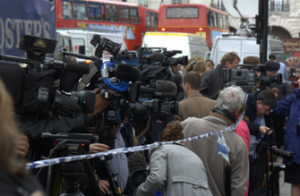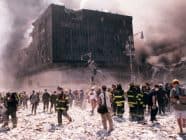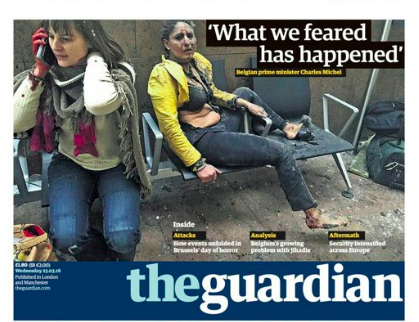In the wake of terror attacks in Paris and Brussels, it is increasingly recognised that terrorism can affect news organisations close to home as well as in the field and that newsrooms should prepare to cover terrorist incidents.
Most news organisations are comfortable in making logistical and deployment plans and decisions. It’s what they do. They increasingly understand the risks of conflict reporting or the dangers of working in failed states and the need to provide appropriate staff training and support.
The needs of the newsroom
However, what is less often thought about are the needs of the newsroom and at headquarters. These range from an increasing awareness of vicarious trauma brought on by staff having to look at distressing images from social media or from conflict – and how they should be managed and supported – to the plans and support that senior managers should have in place.
Terrorism can affect news organisations directly – and when it does, the consequences reach far beyond the immediate physical ones.
In 2001, within days of me being appointed Director of BBC News, Irish terrorists planted a car bomb outside the BBC’s national newsroom which exploded and destroyed the heart of the BBC’s news operation. Thanks to a warning, no staff were injured – but the newsroom took months to be rebuilt. As we had carried out extensive advance crisis planning we lost no core programme output.
In 2007 the BBC’s Gaza correspondent Alan Johnson was kidnapped. The entire organisation was absorbed in efforts to publicise his plight and work to free him. This involved not just his editors and news staff but also the Director General who personally flew to the Middle East to negotiate with governments and other groups.
So terror in many forms can reach and disrupt the operations of news organisations far beyond the issues of reporting in the field. It is essential – as we move into an era where we can expect more terror on our doorsteps wherever we live – that news organisations recognise and plan for this.
So what is a crisis management plan?
It is a developed plan that anticipates some of the key decisions that may need to be taken, who will take them and who will be responsible for clearly allocated activities. Some of the key questions might include:
- Are there clear lines of emergency authority in the newsroom and upwards through the organisation?
- Has a clear plan been circulated in writing and discussed with staff (or better, rehearsed)?
- Is there clearly allocated responsibility for operations, stakeholder communications, external and internal communications, emergency service liaison?
- Are editorial policies in place for hostage situations or violence directly affecting staff?
- Can all senior managers and personnel be reached at all times?
- If phone systems go down, what is the option?
- What are the options if the newsroom and/or master control computers go down?
- Are there up-to-date building and staff directories available?
These are just a few of the initial and basic questions media organisations need to ask and work through in some detail if they become directly involved in the story. There are many more that need to be thought about and developed.
Crisis plans are an important element of good management – protecting the organisation and mitigating risk but just as importantly looking after the interests of staff as well. To that end they fall under the category of journalism safety as much as hostile environment training. We all hope it won’t happen. Many of us know that it can.
Richard Sambrook is the Chairman of the Board of the International News Safety Institute (INSI)
pic credit: Flickr Creative Commons, Dave Stevenson
Tags: alan Johnson, BBC, Brussels attacks, Charlie Hebdo, Crisis, crisis management, hostage, INSI, IRA, kidnapping, news management, Paris attacks, Richard Sambrook, Terrorism













































